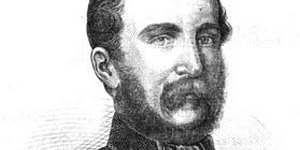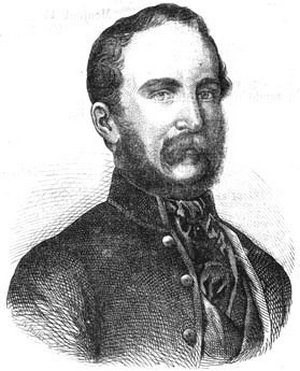Antal Reguly 1841
Only two translations were published of Elias Lönnrot’s first version of the Kalevala, which was published in 1835 and which was later called the Old Kalevala. The first version was the Swedish translation by M. A. Castrén published in 1841 and the second version was the word-by-word French translation by Louis Léouzon Le Duc from 1845. Academics also in other parts of Europe noticed the publication of the Kalevala.
In Hungary, Antal Reguly (1819–1858), a linguist and ethnologist, was interested in the Kalevala and it is possible that this inspired him to go on trying and demanding field trips among the Finno-Ugric people. Gyula Weöres writes that Reguly, as early as in 1840, mentioned in a letter he wrote in Lammasaho that he was going to translate the Kalevala into Hungarian.
Unfortunately, different illnesses took the strength of Antaly Reguly at a quite young age and he implemented only a part of the Hungarian translation of the Kalevala – and, furthermore, a part of this vanished during that time.
“Only the two first poems are preserved of his translation as well as the first verses of the poems 3 and 29 (76 and 83 verses) exist in the form of a manuscript, which also was missing for a long time or mixed with other manuscripts, in the same way as Reguly’s other written works on Finland, for example, an extensive diary in German, notes on Finnish language and history etc. It is known from the correspondence with Hunfalvy that K. A. Gottlund sent the aforementioned manuscripts to Hungary in 1856. Gyula Weöres wrote in 1964 that J. Pápay in 1908 found the Hungarian translation of the Kalevala in the archive of the Hungarian Academy of Sciences. Later the manuscript by Reguly was, again, found in the manuscript archive of the Hungarian Academy of Sciences, where it can be found with the number Ms 6227/89. It contains the poems 1, 2, 3 (lines 1–76) and 29 (lines 1–84). This information was given by professor A. Molnár Ferenc on February 2, 2017.
Although Reguly’s Hungarian translations of parts of the Old Kalevala did not influence later complete Hungarian translations of the Old Kalevala (Hunfalvy, Fábián, Barna and Vikár 1853–1908), they are, still, valuable examples of attempts to adapt Finnish folk poetry into Hungarian, only a couple of years after the publication of the first edition of the book – and it was fairly successfully done.
Gyula Weöres: ”Kalevalan ensimmäinen unkarinnos” – Kalevalaseuran vuosikirja 44. Helsinki: WSOY. 1964.

